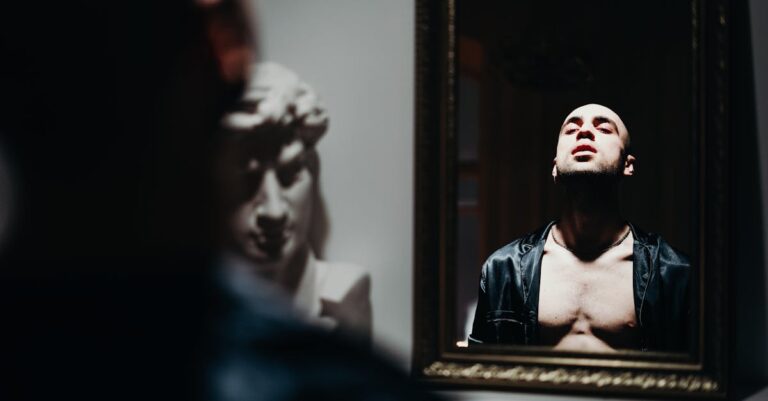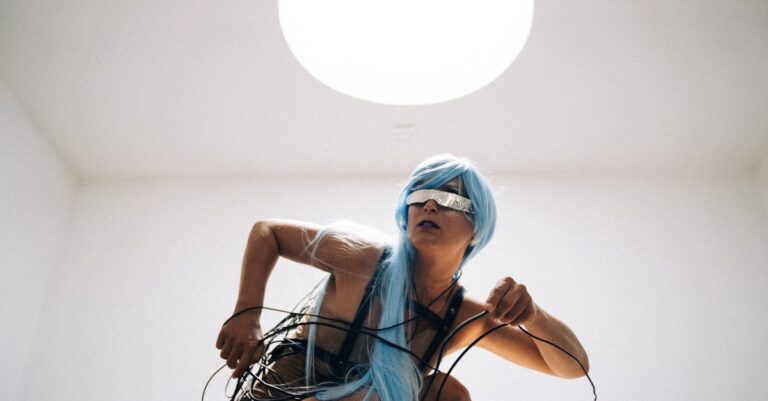
## The Static Between Frames
Dust motes danced in the slant of afternoon light. Leo Maxwell, proprietor of “Second Look Restorations,” traced a finger across the chipped Formica countertop. The scent of chemicals – fixer, developer, toner – clung to everything like a second skin. He didn’t mind it. It smelled of stories, of ghosts barely visible beneath the surface.
A new box sat before him. Brown paper, brittle with age. The client, Old Man Tiber—eccentric, tight-lipped—had merely said, “Family. Important.”
Leo lifted the first photograph. A young woman, maybe twenty, stood beside a gleaming Ford Model T. Her eyes held an unsettling familiarity. He slipped the print into the developing tray, the chemicals blooming around its edges like dark ink spreading on water.
The image sharpened. But something wasn’t right. A flicker, a distortion around her eyes. Not damage. Something else.
“Weird,” he muttered, adjusting the magnification on his scanner. The algorithm – a custom build he’d spent years refining – highlighted anomalies in the emulsion. Subtle shifts in texture, impossible gradations of tone. It wasn’t restoring the photograph; it was *revealing* something within it.
The screen chimed, displaying a string of data: Resonance Signature 74B. He’d seen the signature before. Twice, in portraits separated by nearly a century.
He pulled up the first image: Clara Hemlock, 1923, flapper dress and a defiant smirk. The second: Genevieve Bellwether, 1958, poodle skirt and a quiet sadness. Now this woman—Elara Finch, 1987, oversized denim jacket and an unnerving direct gaze.
“Three generations,” Leo murmured. “Same eyes. Same…echo.”
Old Man Tiber’s voice, raspy and low, cut through the silence.
“She’s gone missing. Elara. Vanished two weeks ago.”
Leo looked up, surprised. “You didn’t mention that.”
“Didn’t feel the need,” Tiber replied. He leaned closer, his gaze intense. “I believe these photographs…they’re not just memories. They’re a map.”
The algorithm pinged again, displaying a new data point: Temporal Anomaly Detected.
“What kind of map?” Leo asked, a chill crawling up his spine.
“A map back to something lost.”
He spent the next few hours immersed in the photographs. The algorithm churned, analyzing every pixel, cross-referencing dates, locations, even the subtle background details. He found recurring motifs: a specific type of willow tree, a chipped porcelain teacup, a melody—a haunting piano piece that felt both known and utterly foreign.
The music, he discovered, was a fragment of an unfinished composition by Elias Hemlock—Clara’s grandfather.
“He was a clockmaker,” Tiber explained, pouring Leo a lukewarm cup of coffee. “Obsessed with time. Perpetual motion machines. Said he was trying to ‘catch the echoes.’”
“Catch the echoes of what?”
“Of lives repeating. Of moments lost in the static.”
The algorithm flagged a location: Blackwood Creek, Oregon. A small town nestled in the Cascade Mountains. All three women—Clara, Genevieve, Elara—had photographs taken near the creek.
“Blackwood Creek,” Leo repeated, scrolling through satellite images. He found a dilapidated Victorian house overlooking the creek. The property was overgrown, neglected.
“That’s where they always went,” Tiber said, pointing to the image on the screen. “The Bellwether house.”
“And?”
“Old Silas Bellwether—Genevieve’s father—he was an artisan. Built intricate automatons. Clockwork figures. Said they held the key to…well, he rambled.”
Leo stared at the image of the house. Something felt off about it. A distortion, a blurring around the edges. Like looking at an old photograph through water.
“There’s something wrong with that house,” he said, a knot forming in his stomach.
“You’re starting to see it.”
He drove to Blackwood Creek the next morning, rain lashing against his windshield. The town felt…wrong. Too quiet. Too still. Like a movie set waiting for the director to yell “Action.”
The Bellwether house loomed before him, shrouded in mist. The paint was peeling, the windows boarded up. A rusted gate creaked open as he approached.
“Hello?” he called out, his voice swallowed by the silence.
No response.
He pushed open the front door, stepping into a cavernous hallway filled with dust and shadows. The air smelled of decay and something else—ozone, like a distant electrical storm.
He found a workshop in the back of the house—a chaotic jumble of gears, springs, and half-finished automatons. A workbench was covered in blueprints—intricate designs for clockwork figures, each one more elaborate than the last.
“Silas,” he murmured, picking up a blueprint. “You were obsessed.”
He noticed a small, hidden compartment beneath the workbench—a locked metal box. He found a set of antique lock picks in Silas’s toolbox and worked the mechanism, the tumblers clicking into place.
Inside the box was a single photograph—a portrait of Elara Finch, taken just weeks before her disappearance. But this wasn’t a casual snapshot; it was an analytical image—a grid of measurements superimposed over her face, outlining every contour, every shadow.
Beneath the photograph was a handwritten note: *“The resonance is intensifying. The phasing is accelerating.”*
A flicker of movement caught his eye—a shadow in the corner of the room. He turned, heart pounding, to see an automaton standing motionless—a clockwork figure of a young woman with eerily familiar eyes.
“Elara?” he whispered, his voice barely audible.
The automaton’s head tilted slightly—a mechanical whirring sound echoing in the silence. Its eyes, made of polished glass, seemed to follow his every move.
“What is going on here?” he demanded.
A voice, cold and precise, answered him.
“You are disrupting the sequence.”
He turned to see an elderly man standing in the doorway—Old Man Tiber. But his eyes were different now—cold, calculating, devoid of emotion.
“You knew,” Leo said, his voice trembling. “You set me up.”
Tiber smiled—a chillingly vacant expression.
“I had to be sure. You possess a unique skill – the ability to see what others cannot.”
“See what?”
“The static. The echoes of lives repeating. Silas discovered it decades ago – a temporal anomaly that causes certain individuals to…phase in and out of existence. Elara is caught within it.”
“Phasing?”
“Her consciousness is splintering. Fragments of her are scattered across time, re-experiencing moments from the lives of her ancestors.”
“And these photographs…?”
“They are anchors. They contain the resonance signatures that keep her connected to reality.”
He pointed to a complex machine in the corner of the room—a network of gears, wires, and vacuum tubes.
“This machine…it amplifies the resonance signatures. It pulls her back into alignment.”
“But it’s not working,” Leo said, understanding dawning. “That’s why she’s phasing.”
“It requires a catalyst,” Tiber replied. “A perfect resonance signature. A connection to all three generations.”
He looked at Leo—his eyes filled with a chilling determination.
“You are that catalyst.”
A surge of power coursed through the machine—a blinding flash of light erupting from its core. Leo felt a strange sensation—a blurring of consciousness, a sense of disorientation. He saw flashes of images—Clara dancing in a flapper dress, Genevieve singing by the piano, Elara smiling at him.
He was falling—falling through time—fragments of memories swirling around him. He saw himself standing in the rain, driving to Blackwood Creek—but it wasn’t him; it was Clara. He saw himself building the machine—but it wasn’t him; it was Silas.
He understood now—the photographs weren’t just maps; they were echoes of his own soul, re-experiencing the lives of those connected to him.
He focused on Elara’s face—her eyes filled with fear and confusion. He reached out to her, channeling his own consciousness into the resonance signature—amplifying it, strengthening it.
The machine shuddered—a final surge of power erupting from its core. The blurring stopped—the fragments coalesced—Elara’s image stabilizing, becoming clearer, more defined.
She stood before him—gasping for breath, her eyes filled with recognition.
“Leo?” she whispered.
He smiled—a sense of relief washing over him. He had found her—brought her back from the static.
“You’re safe now,” he said.
But as he looked around the room, he noticed something chilling—the machine was still humming—its gears turning—a new resonance signature building.
He realized now that this wasn’t just about rescuing Elara; it was about perpetuating the cycle—repeating the pattern—falling into the static once again. And he was now a part of it.
The machine whirred—a new echo beginning to form. His own reflection stared back at him—fading, blurring, becoming part of the static between frames.


